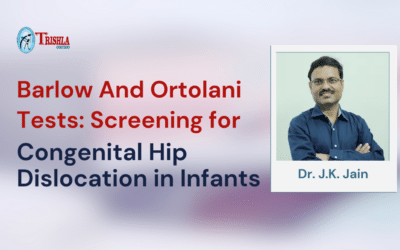Proximal femoral focal deficiency is completely a rare condition which close to 0.11 to 0.2 per 10,000 births worldwide. This entirely varies, some experience only minor difficulties, while others face more significant challenges in their daily lives.
In this blog we will be understanding proximal femoral focal deficiency proper diagnosis and treatment options to help those affected lead active and fulfilling lives.
Table of Contents
- What is Proximal Femoral Focal Deficiency?
- Proximal Femoral Focal Deficiency Causes
- Proximal Femoral Focal Deficiency Diagnosis
- Proximal Femoral Focal Deficiency Symptoms
- Proximal Femoral Focal Deficiency Treatment Options
- Conclusion
- FAQs
What is Proximal Femoral Focal Deficiency?
Proximal femoral focal deficiency is a rare congenital condition with most cases being unilateral around 80-95%, that affects the development of the proximal femur, which is the upper part of the thigh bone.
Occurs at birth and ranges in various abnormalities and deformities in the affected leg. While proximal femoral focal deficiency can vary in severity, it usually leads to significant differences in leg length and function between the affected limb and the unaffected one.
Proximal Femoral Focal Deficiency Causes
While the exact cause of proximal femoral focal deficiency remains the subject of ongoing research, several factors are thought to contribute to its occurrence-
- Genetic Factors
Although it is not usually inherited in a straightforward manner, there may be genetic predispositions or mutations that increase the likelihood of proximal femoral focal deficiency occurring in some families.
- Environmental Factors
Certain environmental factors during pregnancy may also contribute to the development of proximal femoral focal deficiency. These factors can include exposure to toxins, infections, or other external influences that disrupt normal fetal development.
- Multifactorial Causes
In many cases, proximal femoral focal deficiency is believed to result from a combination of genetic and environmental factors. It is likely that various genetic and environmental elements interact in complex ways during fetal development, leading to the abnormalities seen in proximal femoral focal deficiency.
- Idiopathic Cases
In some instances, proximal femoral focal deficiency may occur with no identifiable genetic or environmental factors. These cases are referred to as idiopathic, meaning the cause is unknown, which is why it is a challenge for doctors as well to understand and manage the condition.
Proximal Femoral Focal Deficiency Diagnosis
The diagnosis typically involves a combination of clinical evaluation, medical imaging, and sometimes genetic testing. Here’s an overview of the key aspects of diagnosing proximal femoral focal deficiency-
- Physical Examination
The healthcare provider will assess the affected limb’s appearance, mobility, and range of motion. They may also check for associated limb abnormalities or joint contractures.
- Medical History
Gathering a detailed medical history, including any family history of limb abnormalities or congenital conditions, can provide valuable insights into the diagnosis.
- X-rays
It can reveal the absence or underdevelopment of the proximal femur, as well as any associated abnormalities in the hip joint or knee.
- CT Scans
In some cases, a computed tomography (CT) scan may be recommended to obtain more detailed images of the hip and thigh bones to help assess the extent of the femoral abnormalities.
- Genetic Testing
While proximal femoral focal deficiency is not typically inherited in a straightforward manner, genetic factors can play a role. In some cases, a genetic consultation may be recommended to assess the possibility of genetic contributions to the condition, especially if there is a family history of limb abnormalities.
- Differential Diagnosis
Proximal femoral focal deficiency shares some similarities with other congenital limb deficiencies, which involves ruling out other conditions, is an important aspect of proximal femoral focal deficiency diagnosis to ensure that individuals receive the most appropriate care.
Proximal Femoral Focal Deficiency Symptoms
Here are the key symptoms associated with proximal femoral focal deficiency-
- Leg Length Discrepancy
This is a significant difference in leg length between the affected leg and the unaffected one ranging from a slight variation to a substantial difference.
- Hip and Knee Abnormalities
Proximal femoral focal deficiency can lead to abnormalities in the hip joint and knee joint. These may include hip dysplasia, where the hip socket is shallow or misshapen, and knee instability, in which anterior & posterior cruciate ligament may not develop.
- Limb Deformities
Limb Deformities can involve a shortened femur, a malformed femoral head, and a shortened femoral neck. Femur bone head may also not form. The leg may also be rotated or angulated in an abnormal position.
- Limping and Altered Gait
Due to the differences in leg length and joint abnormalities, individuals with proximal femoral focal deficiency often develop a limp or an altered gait pattern as they try to compensate for the imbalances in their legs.
Proximal Femoral Focal Deficiency Treatment Options
Let us now discuss various treatment options for proximal femoral focal deficiency-
| Treatment Option | Description |
| Limb Lengthening Procedures | This involves gradually stretching the bone and soft tissues, often using external fixators. |
| Orthopaedic Surgery | Surgical interventions to correct deformities in the hip, knee, or foot associated with proximal femoral focal deficiency. |
| Prosthetics | The use of custom-designed prosthetic devices to compensate for the leg length discrepancy and improve mobility. |
| Orthotics | Custom-made orthopedic braces or shoe inserts that help support the affected limb and improve gait. |
| Physical Therapy | Targeted physical therapy exercises to improve strength, range of motion, and overall functional abilities of the affected leg. |
| Occupational Therapy | Therapy is aimed at enhancing daily living skills and independence, particularly in cases with upper limb involvement. |
| Assistive Devices | Mobility aids such as crutches, canes, or walkers provide additional support and stability while walking. |
Conclusion
While proximal femoral focal deficiency presents challenges, especially when it comes to walking and moving around, there are treatment options and support available to help those affected live their lives to the fullest, try to consult an pediatric orthopedic doctor The key is early diagnosis and the right treatment. With the right care and support, people with proximal femoral focal deficiency can lead happy, active lives and achieve their goals
Reference links –
https://www.ncbi.nlm.nih.gov/pmc/articles/PMC5769671/
https://jmedicalcasereports.biomedcentral.com/articles/10.1186/s13256-020-2350-y
https://www.orthobullets.com/pediatrics/4043/proximal-femoral-focal-deficiency











